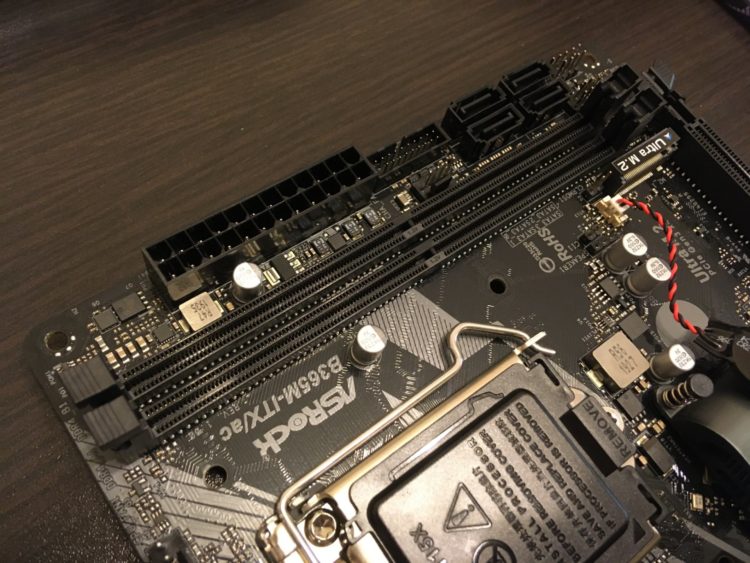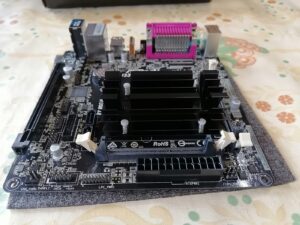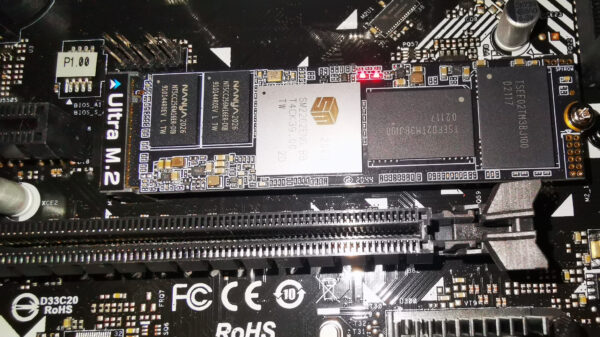Review on ASRock B365M-ITX/ac Motherboard LGA1151-v2
4 min readA motherboard from a major Taiwanese manufacturer, Asrock, was bought on-line at a traditionally lowest price among competitors. The fee was selected according to the following criteria:
- Compatibility with the selected Intel Core i3-9100F;
- Wi-Fi on board (I did not want to pull wires through the entire apartment);
- Bluetooth on board (to connect wireless marshals);
- Small (the Cooler Master MasterBox 3 Lite case was chosen to take up space);
- A decent brand (not noname)
- Drivers for Win7
The rest as a whole will turn out like this. And now everything is in order.
Externally, the board looks just gorgeous. Black color, extremely precise manufacturing, a nice-to-color coating and touch, a lot of different textures. Looking at her is a pleasure. And she is very, very small: a square with a side of only 17 centimeters.
So, what is useful for us can already be considered here. In the center is the 8th and 9th generation Intel® Core ™ processor socket (Socket 1151). Upstairs are two (unfortunately, only two) DDR4 2666/2400/2133 RAM slots for a total of 32 Gb. I installed Kingston DDR4 16Gb (2x8Gb) 2400 MHz pc-19200 HyperX FURY , the processor does not support faster.
A little higher right pins for connecting front buttons and two USB 2.0. To the left of the whole four SATA connectors. You can complain that they are located in one place, but you have to pull the cables, on the other hand the whole board is small, so this is hardly a problem. A little four-pin connector for a case fan (or fans, if connected via a hub) and a connector for front USB 3.1. To the left is a 24-pin power board.
On the right is a single PCI-express slot for installing a video card. The slot is not reinforced, which, as it were, hints that the board is not a gaming one, which means you do not need to put too heavy cards in it. A bit to the left is an ultra M.2 slot for SSD or other peripherals. I did not check it, because I have a classic 2.5 SSD. Near the connector is the CMOS connection of the bios battery. Notebook battery, on wiring. Adhesive tape to the radiator.
To the left of the processor are two four-pin connectors for fans: a processor and a case / pump (for connecting liquid cooling). Connecting front audio inputs at the bottom right. Below is the back panel. The back cover is simply made of foil; it bends literally by itself. However, much is not required of her. Only the silver color that breaks out from the general gamut of the black case and the black board is frustrating.
So, from left to right: video outputs HDMI, DVI, Display port. I don’t use them, because the processor does not have an integrated video core, I can’t even check the performance. But potentially this is very interesting, because it allows you to connect as many as three monitors at the same time, which is interesting enough for an office solution. Further, the PS/2 port, as I understand it, is saved only for the ability to turn on the computer from the keyboard or mouse (although I already doubt about the mouse that someone uses these). Nearby a Gigabit LAN. He has two diodes. The left one shows the connection: lit – there is a contact, blinking – data transfer, does not light – there is no contact. The right one shows the speed: it does not light – 10, orange – 100, green – 1000. There are four USB 3.1 ports. Next is a dual-band Wi-Fi (yes, 2.4 and 5 GHz) and Bluetooth 4.2. Works great both.
On the reverse side there is nothing interesting.
Comes in a glossy black box. Technology and benefits are listed on the back. We open.
Everything was neatly arranged, but there was plenty of space, you could put something else.
Options are not too rich. A book and a disk with drivers, a silver back plate, two antennas (not remote, like in expensive boards), only two SATA (with four slots): one straight-direct, the second straight-angled, a bolt for M.2 and the board itself in an antistatic bag on a foam pad. And that’s it. Neither you need screws for installation in the case, nor beautiful stickers – nothing more.
Here is a motherboard. It suits me 100%, it fits my criteria and, at the same time, is the cheapest among competitors.
Addition: it is worth making a reservation about the chipset. This motherboard is built on B365 chipset, which is actually a facelift of old H270 chipsets with 22 Nm process technology. Despite the fact that all other Intel chipsets already have 14 nm process technology. B365 is not capable of overclocking and does not support USB 3.1 (Asrock, as you know, solved this problem by installing additional components). But again, this is enough for my needs, but Windows 7 support remained only with this motherboard compared to newer ones. And this is important to me.
The article is written on the basis of materials of this site.














